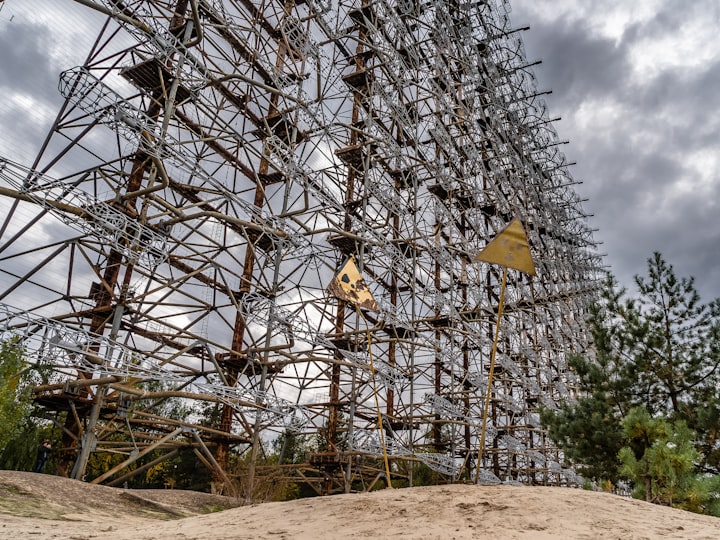"The Global Financial Disasters: The Most Expensive Failures of Large-Scale Projects Across the World"
World costliest failed projects

World’s Costliest Failed Projects
In the world of construction and engineering, large-scale projects can often come with significant risks and unexpected challenges. Despite extensive planning, complex designs, and large budgets, many projects have ended up as colossal failures, resulting in immense financial losses, environmental damage, and even loss of life.
Here are some of the world’s costliest failed projects, in terms of both financial losses and the negative impact on communities and the environment.
The Chernobyl Nuclear Power Plant
The Chernobyl disaster, which occurred on April 26, 1986, is considered one of the worst nuclear accidents in history. The explosion at the Chernobyl nuclear power plant in Ukraine released radioactive particles into the atmosphere, causing widespread contamination and radiation poisoning.
The cost of the disaster is estimated at over $235 billion, including the cost of cleaning up and decontaminating the site. The long-term health effects of the accident are still being felt today, with an estimated 4,000 deaths attributed to radiation exposure and many more suffering from illnesses caused by the disaster.
The Channel Tunnel
The Eurotunnel, commonly referred to as the Channel Tunnel, is a railway tunnel spanning 50 kilometers underneath the English Channel, linking France and England. The project was beset by numerous challenges, including technical difficulties, financial problems, and political opposition.
The initial cost estimate for the project was $7 billion, but by the time the tunnel was completed in 1994, the final cost had ballooned to over $21 billion. The project also suffered from lower-than-expected passenger and freight traffic, resulting in financial losses for the companies involved.

The Big Dig
The Big Dig was a massive highway construction project in Boston, Massachusetts, that aimed to improve traffic flow in the city. The project involved the construction of a 3.5-mile tunnel beneath the city and the relocation of several major highways.
The project was plagued by cost overruns, delays, and design flaws, with the final cost estimated at over $22 billion, making it one of the most expensive public works projects in US history. The project also suffered from several high-profile accidents, including a ceiling collapse that killed a motorist in 2006.
The Airbus A380
The Airbus A380 was intended to revolutionize air travel with its massive size and advanced technology. However, the project was beset by delays and technical problems, and the final cost of the project was estimated at over $25 billion.
Despite high initial demand for the aircraft, sales never met expectations, and Airbus was forced to announce the end of production in 2021. The project is considered one of the costliest failures in aviation history, with estimated losses of over $30 billion.
The Alaskan Way Viaduct Replacement Tunnel
The Alaskan Way Viaduct was an elevated highway that ran along Seattle’s waterfront, but it was deemed unsafe due to the risk of an earthquake. The city decided to replace the viaduct with a new tunnel, but the project was plagued by design problems, cost overruns, and delays.
The final cost of the project was estimated at over $3.3 billion, nearly twice the initial estimate. The tunnel also suffered from several technical issues, including a major breakdown of the tunnel-boring machine that delayed construction for several months.

The Millennium Dome
The Millennium Dome was a large dome-shaped building constructed in London to celebrate the turn of the millennium. The project was intended to be a showcase of British culture and technology, but it suffered from low attendance and financial losses.
The final cost of the project was estimated at over $1 billion, with the dome being sold for just $125 million after the event. The project was criticized for its lack of a
clear purpose and its inability to attract visitors, and it remains a symbol of the UK government’s mismanagement of public funds.
The Boston Central Artery/Tunnel Project
The Boston Central Artery/Tunnel Project, also known as the “Big Dig,” was one of the most ambitious transportation projects in U.S. history. The project aimed to replace Boston’s elevated highway system with a series of tunnels and bridges, but it was plagued by cost overruns, delays, and safety concerns.
The final cost of the project was estimated at over $24 billion, making it one of the most expensive public works projects in U.S. history. The project was also marred by several accidents and controversies, including a ceiling collapse that killed a motorist in 2006 and allegations of fraud and corruption.
The Bay Area Rapid Transit (BART) System Expansion
The Bay Area Rapid Transit (BART) System Expansion refers to the expansion of the rail system that serves the San Francisco Bay Area, known as the BART system.
However, the project was plagued by cost overruns and delays, and the final cost of the project was estimated at over $2 billion, more than double the original estimate. The project also suffered from several technical issues, including problems with the trains and the computer systems that control them.
The Denver International Airport
The Denver International Airport is one of the largest airports in the world and was intended to be a showcase of modern airport design and technology. However, the project was plagued by delays, cost overruns, and technical problems, including issues with the airport’s automated baggage system.
The final cost of the project was estimated at over $4.8 billion, nearly double the initial estimate. The baggage system alone cost over $1 billion and was eventually abandoned after it failed to work properly.
The Sydney Opera House
The Sydney Opera House is an iconic building that has become a symbol of Australia. However, the project was beset by technical and financial problems, with the final cost of the project estimated at over $102 million, ten times the initial estimate.
The project suffered from numerous delays and design problems, with the final building being very different from the original design. The project also faced funding problems, with the government struggling to secure the necessary funds to complete the project.

In conclusion, these costliest failed projects demonstrate the risks and challenges that come with large-scale construction and engineering projects. These projects often involve massive budgets, complex designs, and a multitude of stakeholders, and the failure of any one of these elements can result in catastrophic consequences. It is crucial that these projects are managed effectively, with proper planning, risk assessment, and oversight to ensure that they are completed successfully and safely.
About the Creator
abdul rahoof
Content writer | Blogger






Comments
There are no comments for this story
Be the first to respond and start the conversation.